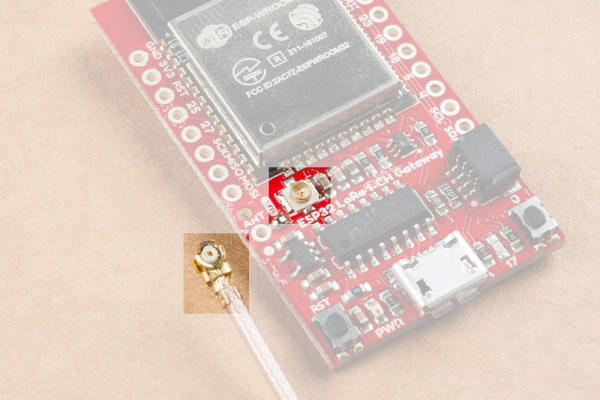Three Quick Tips About Using U.FL
Introduction
Since the number of SparkFun products with wireless or radio-frequency (RF) applications continues to increase we thought it would be helpful to make a crash course in one of the most ubiquitous players: the U.FL connector.
U.FL and the host of compatible connectors (like I-PEX, IPX, or UMCC) are all designed to allow attachment of small coaxial cables that are preferable in wireless applications because of the shielding that the outer conductor provides. We use these connectors because they are small and inexpensive and because the smaller coaxial cables used with them are much easier to deal with. They are, however, a little bit harder to use and more fragile than their larger step-cousin (the SMA connector) so it doesn't hurt to get a quick primer on how to use them.
This photo shows off both the male and female ends of a U.FL connector. On the left and attached to the cable is the female side while the male side is soldered to the board. (By the way, a connector's gender is always determined by the gender of the electrical contacts rather than the gender of plastic shrouds or other extraneous materials).

In the hands of an eager inventor, exposed U.FLs get plugged/unplugged much more often than those that live deep inside a consumer's cell phone. A Hirose datasheet shows that they only bothered to test repetitive use to 30 cycles, so follow these tips to keep your connectors working well for as long as possible!